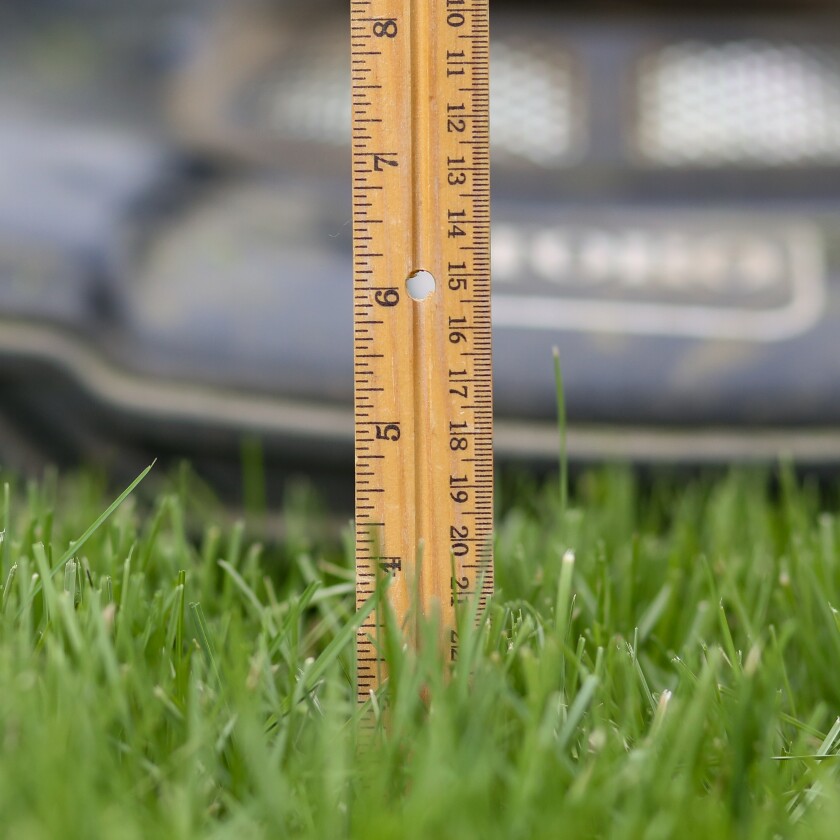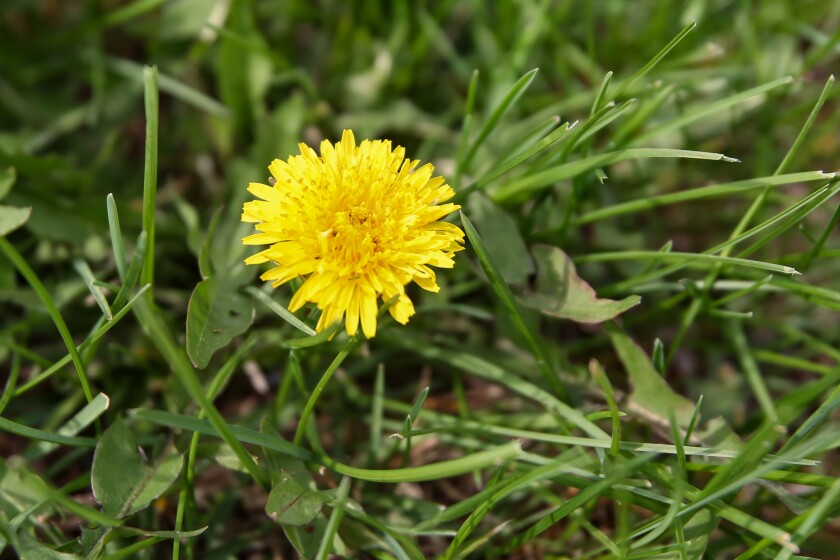I wasn’t planning to discuss No Mow May again this year, because I was hoping the controversial practice had lost steam. But an email from a local television reporter said otherwise.
The good-natured reporter asked if I would do an interview for the evening news about the many benefits of No Mow May, a movement he was hearing much about.
I’d enjoy doing the interview, I told the reporter, but instead of promoting it, I would explain why No Mow May is not a good idea, and why North Dakota State University and other research universities consider the practice to be well-intentioned but misguided.
The surprised reporter said he was under the impression that No Mow May enjoyed widespread agreement, but in reality, it’s quite controversial. A turf research specialist at Cornell University put it bluntly: “It’s a terrible idea. It’s a nice slogan, but letting the grass grow high and allowing it to do its thing, and then suddenly mowing it back is really counterproductive.”

To the reporter’s credit, he interviewed me anyway and recorded my comments explaining why No Mow May doesn’t accomplish its mission, while causing great stress and potential damage to lawns.
The catchy title was coined by a well-meaning organization in the United Kingdom in 2019 to encourage people to pause mowing during the month of May so flowers in the lawn could bloom, providing early-season pollen and nectar for bees and other pollinating insects.
In 2020, the residents of Appleton, Wisconsin, heard about the British program and convinced their city council to encourage people to stop mowing during May.
In theory, not mowing the lawn for the entire month would allow plants to flourish and bloom without being mowed off. These flowers would provide nourishment for bees early in the growing season, and most of our fruit and vegetable production depends on a healthy bee population.
Research was conducted by Lawrence University that favored No Mow May, which received national press, including an article in the New York Times. Many communities adopted the practice as a result. Shortly after, though, the research study was retracted due to inconsistencies, according to NDSU Horticulture Specialist Esther McGinnis.

Recommended mowing height is between 3 and 4 inches.
Chris Flynn / The Forum
For the sake of discussion, what if we don’t mow our lawns in May? What type of flowers would grow and bloom?
The sales pitch for No Mow May indicates that if we stop mowing, it will allow wildflowers to spring forth in our lawns and provide a homeland for beneficial pollinators. However, if most of us stop mowing our lawn in May, the most prevalent flower would be dandelions.
Most lawns don’t have a meadow of wildflowers waiting to be unleashed. Instead, lawns have dandelions waiting to proliferate, and that’s what No Mow May unleashes.
Bee research has shown that pollen from dandelions isn’t overly nutritious for pollinating bees, and it lacks important amino acids necessary for their health. There are better food sources that we can promote and provide.
Failure to mow in May could cause an even greater escalation in the dandelion population with fluffy seed spreading far and wide. Dandelions, which are not a native species to North America, quickly become embedded where they’re not wanted, such as in perennial flowerbeds, choking out flower types that provide better nutrition for bees than the dandelions.
White Dutch clover is a better substitute for dandelions, and bees love it: It supports bee health while meshing well with the existing turf.
We don’t need to participate in No Mow May for white clover to thrive, because if lawns are mowed at the recommended 3-to-4-inch height, the low-growing clover is left intact, providing a true bee haven.

No Mow May results mostly in dandelions, which lack important amino acids that bees need.
Chris Flynn / The Forum
Besides producing mostly less-than-nutritious dandelions, No Mow May can damage lawns. Have you ever mowed too-long grass after vacation, and noticed how stemmy and coarse the grass became?
Attempting to mow 15 inches of grass growth in early June isn’t easy or healthy. Turf research shows that removing more than one-third of a grass’ blade at one time shocks grass plants. I received an email from a lawn owner last year who said he’ll never participate in No Mow May again because he ruined his lawnmower trying to mow the long grass in June.
Causing this stress to a lawn right before summer can diminish its health for the rest of the growing season. Repeating No Mow May for consecutive years can cause visible thinning and weakening of turfgrass.
Helping our pollinating bees and insects is vital for our food supply, and there’s a better way than letting our lawns suffer. Besides planting the clover mentioned, plant a perennial flower garden that includes spring blooming types rich in nectar and pollen, including native wildflowers.
By planting spring-flowering shrubs and trees, landscapes become more beautiful and bees will be happy. For more information about helping pollinators, visit the
North Dakota State University Pollinator Conservation Facebook page.

